My name's Rebecca Fenlon and in this article, I'll be taking you through the importance of customer success: how successful customers drive successful companies. This is ultimately about how and why your customer success strategy is crucial in driving organizational success.
My assumption is that most of you reading are already working in customer success. What I really hope I can give you in this article is some tools and insights to take away to your wider organizations in the hopes of making CS front and center if it's not already.
Perhaps you don't yet have a customer success team, maybe you're a new startup, maybe you're just crafting your customer success strategy - if that's the case, I'm hoping to convince you exactly how crucial CS is to the success of your business.
Who am I?
Mostly, I'm just someone with a passion for customer-centricity. But I got some feedback that maybe that's not enough for a buyer. I'm also Head of Customer Success for Cognassist. We were lucky enough to be awarded UK's number one ed-tech startup last year.
We're on a mission to ensure no learner is left behind and we do that by identifying hidden learning needs and providing personalized support to ensure learners achieve their qualifications.
In terms of my career, I started out in implementation but I've actually moved throughout the whole client lifecycle; pre-sales, implementations, support, strategic relationship management, which ultimately culminated in me working in customer success.
To me, this was perfect because CS can incorporate any number of these things, and ultimately, it was that understanding of the end-to-end lifecycle that nudged me into CS today.
What I'm really passionate about now is building scalable functions and processes that deliver on customer needs. This is really the crux of my current role at Cognassist.
Finally, I'm currently completing my executive MBA at Warwick Business School, specializing in entrepreneurship.
Customer-centricity
I mentioned customer-centricity in my bio, and this is the first thing that I want to talk about today. Like any good MBA student, I have brought you a definition from the wisdom high academic literature of Investopedia.
That is absolutely a joke, just in case any of my lecturers are reading, I promise I don't put Investopedia into my assignments.
What is customer-centricity?
It's a strategy and a culture of doing business that focuses on creating the best experience for the customer and by doing so builds brand loyalty.
Customer-centric businesses ensure the customer is at the center of a business's philosophy, operations or ideas. Customer-centric businesses believe their clients are the primary reason they exist, and they use every means at their disposal to keep the client satisfied.
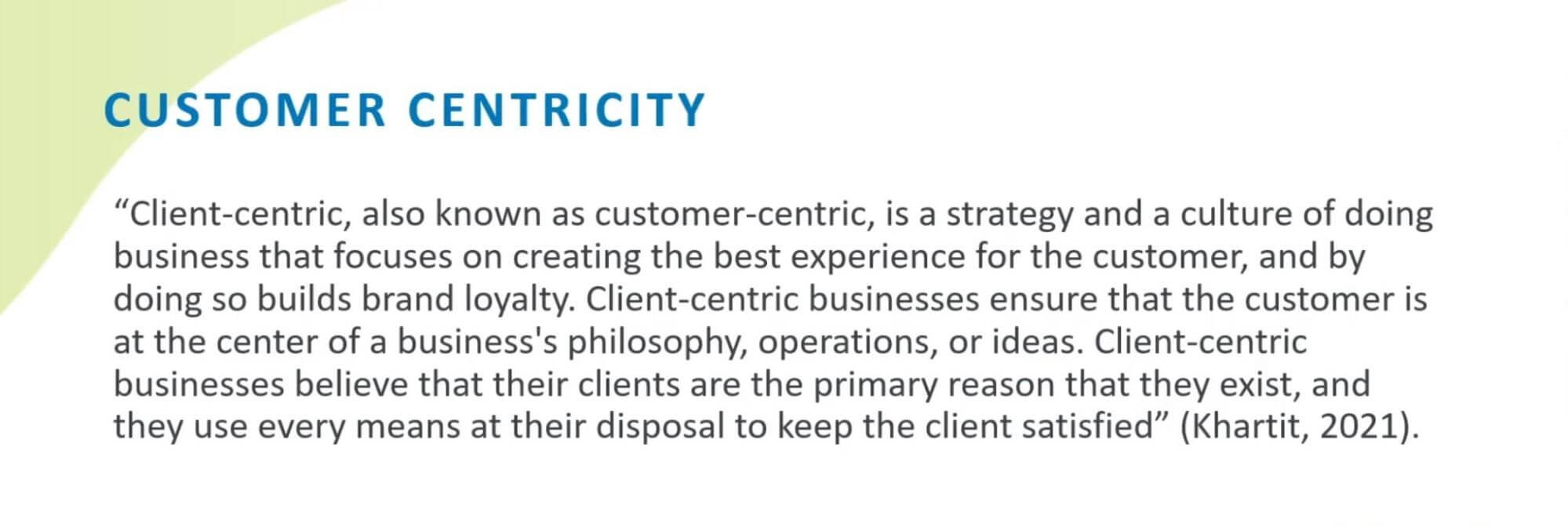
Customer centricity at Cognassist
I know I'm immensely lucky and this is because at Cognassist we have a real social good up in what we do. Helping learners with additional learning needs achieve their qualifications is something that absolutely drives us in our day-to-day work.
It actually makes it really, really easy for us to be customer-centric in what we do because there's a huge social value in ensuring our clients achieve their aims in the easiest and best way possible.
But I am super conscious that not all companies have this driver of social value/social good. This is where it may need to be a bit of a conscious effort in how you build that customer-centric culture. What I wanted to talk about in this article is how we will do this.
The what is it not?
But firstly, I want to talk about why you would want to and also why it ties into customer success because of course customer success is not synonymous with customer-centricity.
The first thing I want to point out, as any CSM manager will know, customer-centricity absolutely does not mean we just always say yes to customers.
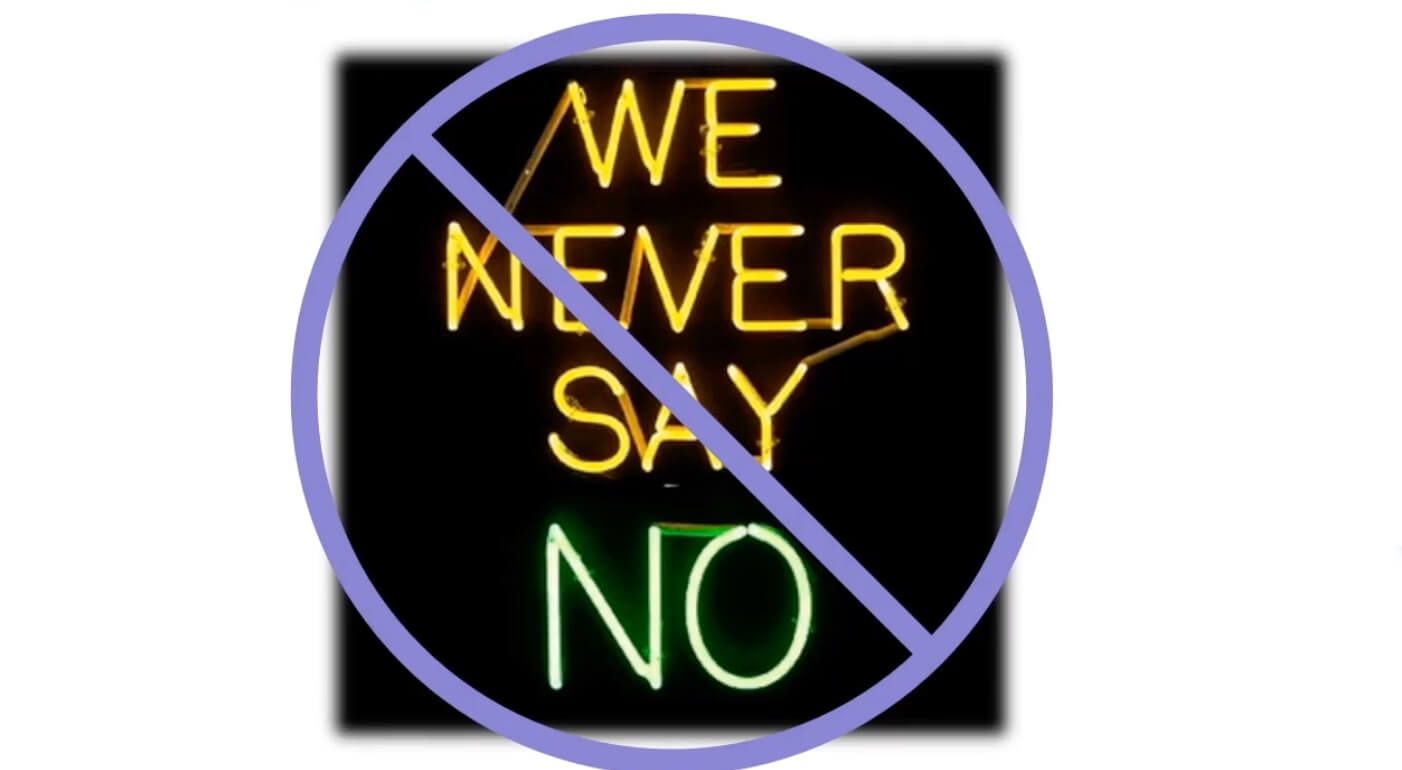
Because ultimately that will leave you with a poor product-market fit and you'll end up trying to service customers who shouldn't really be your customers in the first place.
You waste time, you waste money - that is not what goods CS is, that is not what good customer-centricity is at all.
The what
Now I've established what it's not I'll talk about what it actually is.
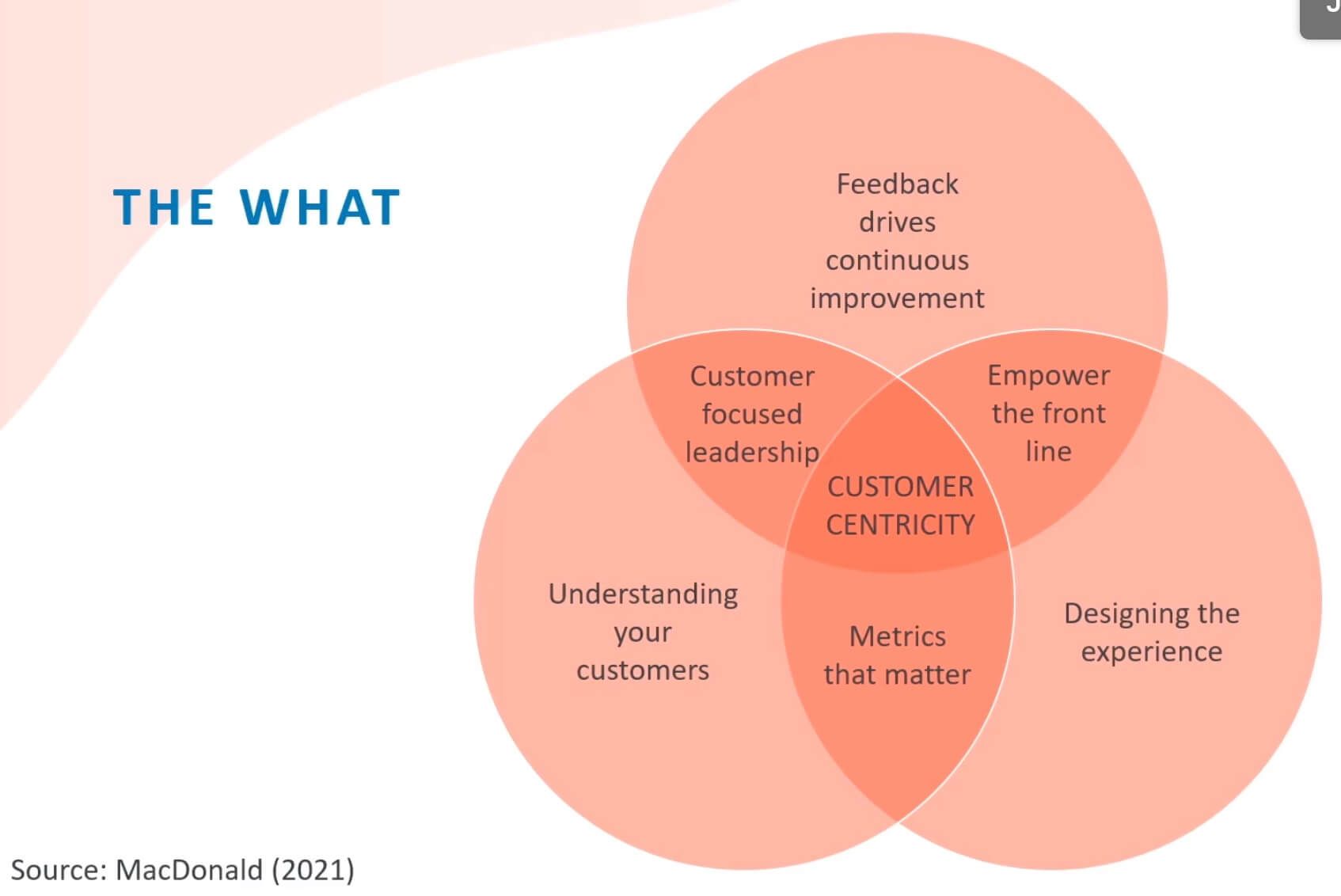
It builds a company culture that aligns with everything CS wants to achieve.
Metrics that matter
Think about your metrics, whatever it is you're measured on, whether it's retention, usage, engagement, whatever that may be, suddenly the CS metrics that matter become the company's metrics that matter.
And suddenly product teams, marketing teams, dev teams, whoever it is, they get measured on it themselves as well.
Customer-focused leadership
What it also does is shifts leadership conversations so they suddenly become more focused on the customer as well.
Empower the front line
This means CS actually takes center stage because they are the frontline in achieving that desired customer-centricity.
How do we do this?
I think most of this is what CS teams already do, or hopefully should already do.
It's understanding your customers, it's getting customer feedback, and it's using those two things to design the end-to-end customer experience in the best way for the customer and not the company.
I have no doubt some teams reading are already partway/halfway there, maybe but it is about convincing the rest of the company to jump on board this journey as well.
The why
Nick Mehta, Dan Steinman, and Lincoln Murphy literally wrote the book on customer success given that's what it's called. They talk about the shift to SaaS and the shift to subscription-based licensing as being about a power shift from the vendor to the customer.
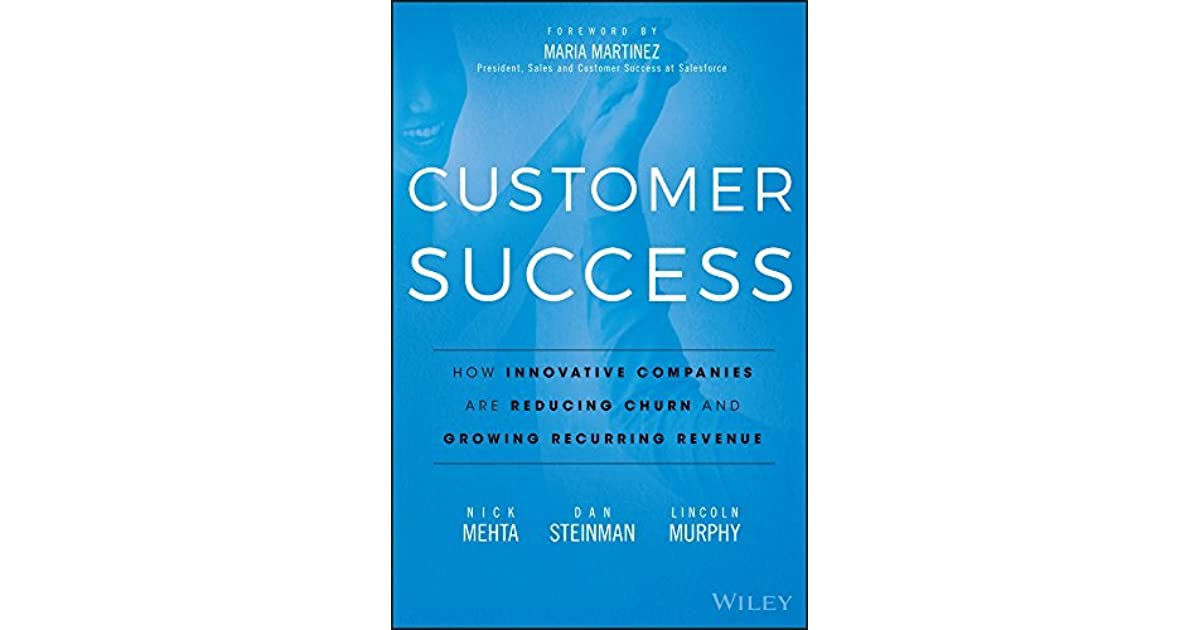
Back in the day, when you bought software, you had a real heavy upfront investment; people, data centers, blah, blah, blah. By removing that we removed customer stickiness because it's a hell of a lot easier for customers to move providers, to buy new software, to change their approach.
That has meant suddenly we have to work a hell of a lot harder to retain those clients. It's from that power shift that really the importance of CS comes in and ultimately CS can make or break your company.
They talk about CS as three different but closely related concepts. They talk about CS as an:
- Organization,
- A discipline, and
- A philosophy.
CS as an organization
Let's think about CS as the organization first. This is typically the point which companies get to but then get stuck and don't really move beyond this.
You may have a CS team that's executing well, getting great feedback from customers, things like "My CSM is always there when I need them. They're so responsive. They're only ever a phone call away". And all of that is great.
Proactive vs. reactive
Don't get me wrong, you don't want to take that away, but it's very reactive. As soon as I say the word reactive to anyone in CS they typically swear up and down "No, no, no, our teams are proactive, not reactive at all, that's what support's there for".
But recent research done by New Breed showed that only 57% of CSM outreach was proactive and typically CS leaders were aiming for an 80/20 split. I think there's definitely some way to go in the industry and to be honest, there's definitely some way to go in my team as well.
Interestingly, the New Breed report also said that where CSMs weren't responsible for renewal, there was a 39% improvement in that proactivity. What they credit this as is more time for the CSM to be strategic.
This makes absolute sense but to be honest, it hurts my heart a little because surely, where a CSM is responsible for renewal, that's when they actually need to be more proactive. Because they should be wanting to be more proactive in their approach, they should want to be embracing their role as a trusted adviser and proactive partner.
Really, that's crucial to the interaction of a CSM that drives renewal as well. So definitely something we need to work on.
CS as a discipline
If we look at CS as a discipline, this is really how you take the reactivity and turn it into proactivity. Not just within CS, but it's actually across the entire company as well.
This article would turn into a thesis if I went into the 10 laws of customer success they go into in the book. But really, this is the blueprint for how you take that reactivity and turn it into productivity.
I really recommend it, I promise I'm not getting any kickback from this or anything like that, I don't even know them. But I really recommend you have a read of the book if you want some guidance on how to do that.
CS as a philosophy
CS as a philosophy is what I wanted to talk about today because this is really why you do it and this is where customer-centricity comes into it.
In their words from the book:
“CS is a philosophy, and it must pervade the entire company. No organization or job role can function in a vacuum, it requires a top-down company-wide commitment”.
In my view, it's not possible to implement and follow their 10 laws of customer success without adopting the philosophy first, which means you kind of have to go philosophy > discipline > organization in order to really build a strong CS culture in your company.
Not convinced?
If all of that's not enough to convince you, and particularly if I have some CFOs reading, research by Deloitte found customer-centric companies were 60% more profitable compared to companies that were not focused on the customer.
Hopefully, that little stat has managed to win you over.
The how
Enough about the why and the what - let's move on to the how. Because the path to customer-centricity is absolutely not easy but I did want to give you some suggestions on how to build that philosophy.
These suggestions are quite academic in that they view it from an entire organizational lens rather than something an individual can do in their day-to-day. This:
- Stems from the research that I did, but
- Stems from my personal belief that I think it is really hard to enact this as an individual unless you have the top-down buy-in of your entire senior leadership.
So I'm going to talk about it from an organizational lens here.
Three ways to build customer-centricity
There are three ways you can build customer-centricity as a culture and that's through:
- Processes,
- Structure, and
- Financial metrics.

Structure
Let's talk about organizational structure first and it's around structuring it by customer need rather than by product or function. Let's take this with a CS example in mind.
If you have a team of CSMs how do you specialize them across your client base? Do you align them with particular product types within your portfolio with each CSM having in-depth knowledge of that particular product? Or do you align it by client industries?
The reason you do that is that then your CSM has an in-depth knowledge of their clients' industries and how your product provides specific value to them within their industry use case of it.
Complete full disclosure, I don't actually align my CSMs by industry, they're actually aligned by region, which is probably the exact opposite of what I'm talking about today.
Processes
The second one is around defining processes based on customer experience, not internal function. Let's think about this from implementation.
Do your customers need to contact several different departments to do with particular steps in the implementation process? Or is it built into a seamless process for them?
Again, reading this, I would have sworn up and down, "Yes, sure seamless process. Implementation is great at Cognassist, absolutely love it". But when I dug a little bit deeper, I did actually realize that some of the queries that were coming in weren't being dealt with by the CSM and couldn't be dealt with by the CSM.
We were actually passing them along to different teams, different departments when queries got too technical, if it was a billing issue, things like that. Absolutely a step we could take and improve that.
Financial metrics
The third one is around viewing financial metrics from a customer-first lens. Let's take a particular cost-saving measure, is it going to be done at the expense of the customer? Or does it have a customer benefit for it as well?
I know you're typically thinking, "Oh, okay, a cost-saving measure's never going to have a customer benefit". But I can give you a particular example.
Example: knowledge base
I know it's a bit controversial whether support is part of customer success or not and it differs from organization to organization. In Cognassist support feeds up into Team Customer, we call it. So we recently implemented a knowledge base and you could view our knowledge base implementation as a cost-saving measure.
It could be yes, we're reducing the contact points for the support team, we're reducing the contact points for our CSMs, we have fewer questions. But actually, we didn't implement it as a cost-saving measure, we implemented it as a customer satisfaction measure.
Forrester claims 70% of customers prefer to use a company's website to get answers. So whilst yes, there is obviously a cost-saving benefit for us implementing a knowledge base, there was absolutely a customer-first lens for us doing this as well.
Barriers
This is some great research that was done by the CBRE office and the reason I wanted to bring this in is that I think it aligns with the academic approach we've just taken and throws it into some real-world terms.
This ultimately answers, what challenges do you face in achieving a truly customer-centric organization?
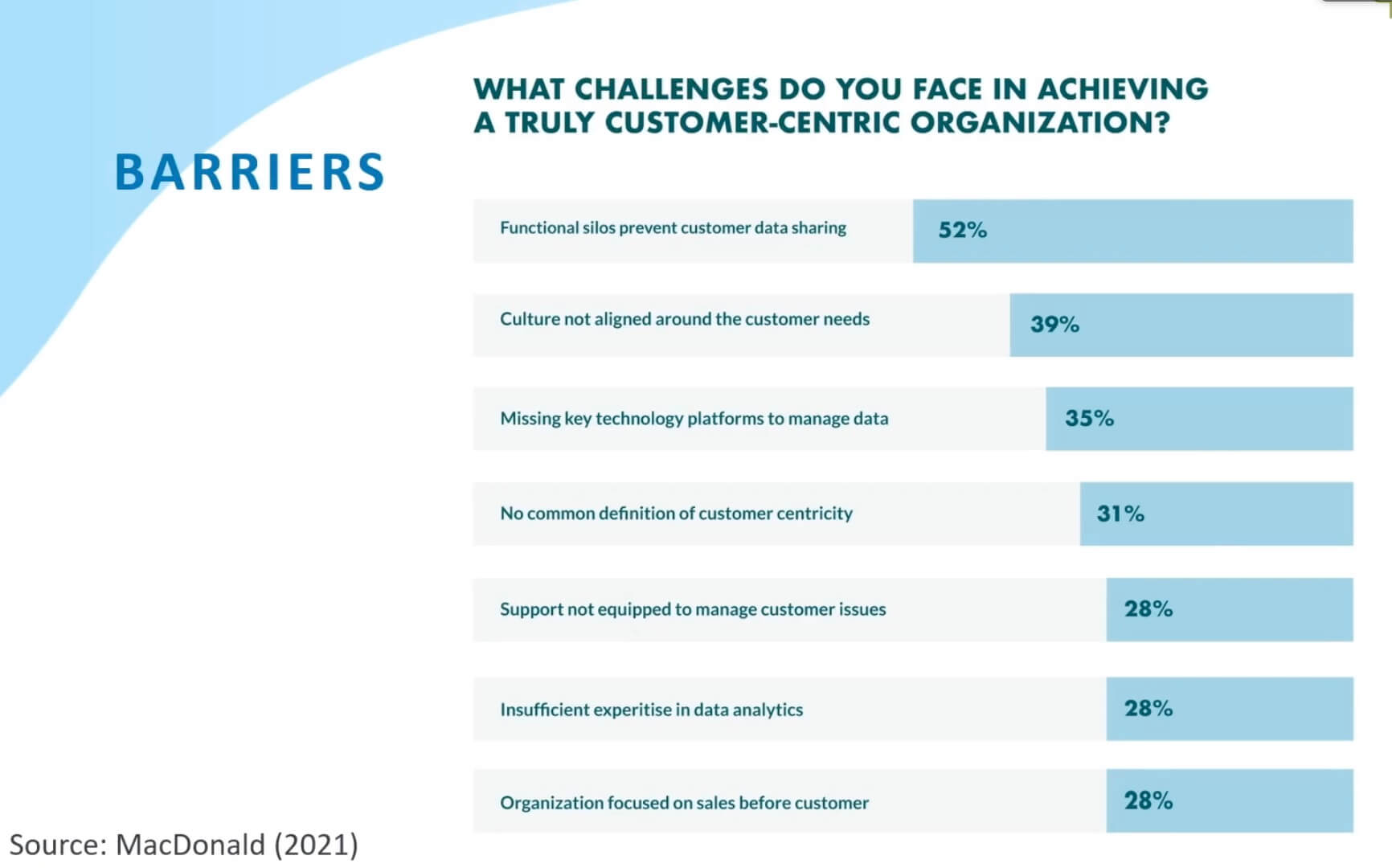
Functional silos prevent customer data sharing
And the biggest factor we had was functional silos preventing customer data sharing. If we think back to our academic approach; structures, processes, metrics, how could we, therefore, remove those functional silos to ensure customer data sharing?
Well, of course, that is something we do through structures, and through processes in order to remove those functional silos.
Really everything in this list could be solved through those structural processes or financial metrics lenses. Except for maybe insufficient expertise in data analytics, that one's probably a hiring thing rather than a customer-centric view.
How do I know if I don’t have a customer-centric organization?
So how do you know if your organization is customer-centric or not? To everyone who is working in CS, I think it's probably blatantly obvious.
But for senior leaders, I do want to suggest it's not outside the realm of possibility that you think or you assume you have a customer-centric organization when those on the frontline might blatantly disagree. Or more importantly, your customers might blatantly disagree.
So how do you know if your organization is customer-centric? Beehive actually put together a checklist which I think encompasses it perfectly.
Poor CRR
The first one is a poor retention rate. If your customers are leaving, obviously, whatever experience you've given them has not met their needs, it hasn't provided them with value.
Hopefully, you are conducting some churn analysis in this in order to identify why. But I do find churn analysis can be a little bit deceiving. It typically blames the product, it typically blames a price point, a particular experience.
Obviously, those things can be addressed but customer-centricity will influence the way you address them. Ultimately, it will also be a little bit more proactive as well.
There might be certain things that annoy your customers, there might be certain things your customers aren't getting the best experience from, but maybe it's not something they can identify enough that it's something that's fixable. Whereas customer-centricity will be more proactive in that approach and help you identify that a little bit earlier.
Complex customer experiences
Your second identifier might be that customer experiences are long and complex. To demonstrate this one I'm going to give you a little bit of a story.
Example: the Save Team
Back in my uni days in Australia, I used to work for an energy company. My job was called the Save Team and it was to call up customers who had already put in a change order to leave and go to a different provider and try and convince them to stay. I was annoying. Please don't judge me for it now.
Quite often the reason they were leaving was that they had an issue that needed to be resolved on their account, they called through, hadn't been able to get it resolved. Generally, it was something that was quite easy to fix. I would know it's quite easy to fix but I didn't necessarily have the system access/rights to make the changes.
What I would do is transfer them to the team who could, I would always transfer them unlike most of my colleagues who would dump them in a queue and not call them back. And I would transfer them through warm, speak to the consultant in the correct team, explain the issue, explain what the resolution needed to be, explain this was our one chance at saving it and my commission was on the line so hopefully they were a bit more likely to follow through.
Then I would transfer the customer over. I would have agreed to a time to call back the customer to check the issue was resolved and hopefully end up saving them. Probably when I called back it was maybe a 50/50 whether the consultant on the other team had actually resolved the issue.
If they had generally the customer was happy to stay, I would give them a big discount, we'd end up as friends, it was great. But what they would need to do is ring the other provider they'd organized to move to, cancel their change order, get a confirmation number to confirm that cancellation.
Then I would call them back in an hour's time to get that number from them. The typical trick on behalf of the alternate provider was to claim they didn't need a cancellation number and not really cancel it.
Have I made my point?
Given how wordy it is for me to explain this process to you I think that gives you an indication of how long and complex this process was.
Let's ask ourselves the question - was this process designed for what worked best for the customer, or what works best for the energy company? Absolutely, it was the energy company, it was saving them but it was a terrible experience for the customer. Mostly, that just ended up pissing them off.
Inconsistency
Inconsistency is likely to be your third identifier. If your customer’s experience is going to differ depending on which CSM they have assigned, it's a pretty big indication your processes have evolved organically, as quite often processes do.
Whilst this isn't necessarily a bad thing, organically evolve processes haven't really been deliberately designed with the customer in mind. So it's a pretty big indication that it's not necessarily a customer-centric process.
Unmet expectations
Unmet expectations are another big one. Typically, lots of promises are made, and lots of promises are never kept. I like this one in particular because I think it can be applied to internal customers just as much as your external ones.
Let's face it, hopefully, your external promises are generally kept but if your teams are consistently having to chase your accounts team, for example, for information, they said they'd provide or product team for latest release notes, whatever it may be, that's a pretty big indication that your organization isn't customer-centric.
This frustration will obviously frustrate your CS teams but it's also going to trickle down to the customer as well because it's going to be slow processes, slow resolution, all of that.
Responsibility and accountability
The last two, based on responsibility and accountability, I've called "That's Bob's problem” and “That's Bob's fault". Bob is my standard generic name for a random person.
It's really around customer issues that get passed around the houses, no one taking ownership, it's a blame culture, "That wasn't my issue. It was a negative customer experience, it wasn't my fault". It's always someone else's fault.
Obviously, both of these are not nice in cultures in general. But apart from creating a negative culture in themselves, they also create a negative experience for the customer because the outcome never gets resolved.
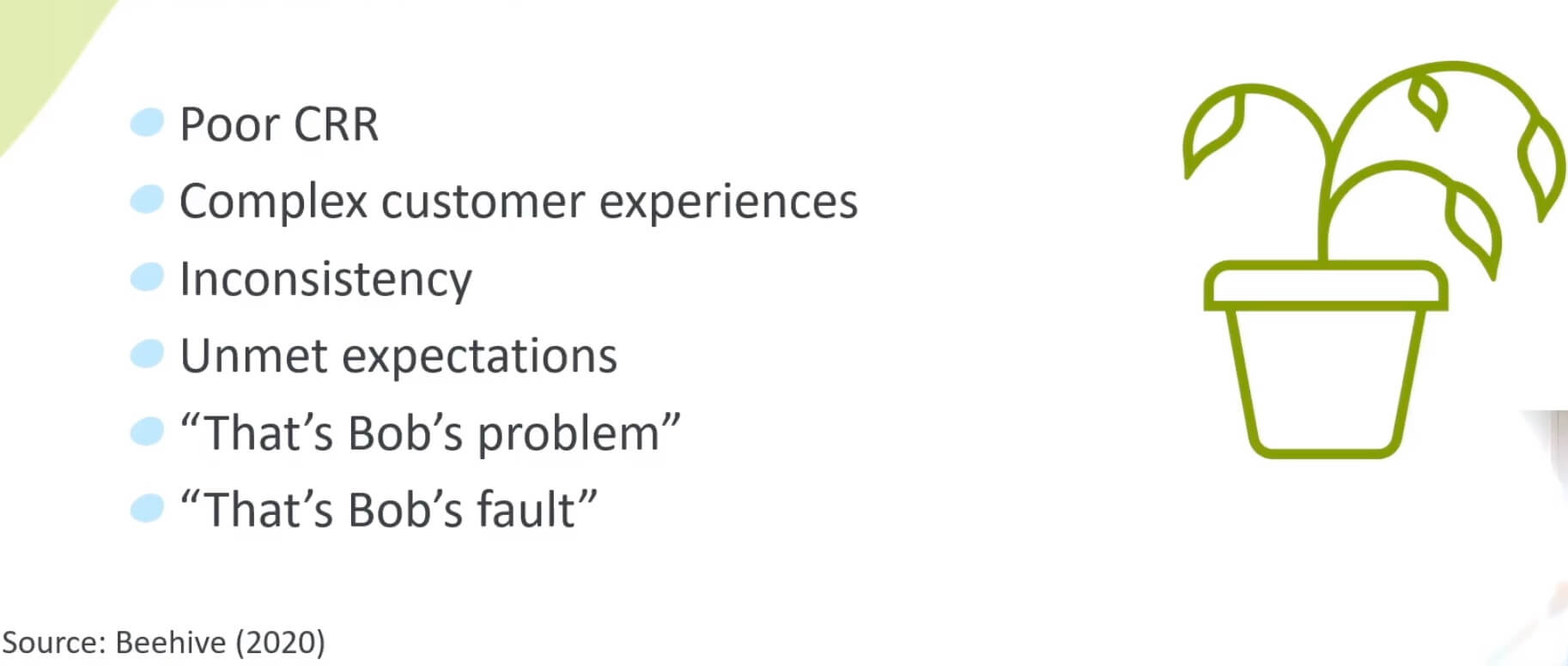
What does a positive customer-centric organization look like?
How can you tell that you've actually got one?
Internally
Customer experience will be embedded in your organization and I think your CS teams will typically be the ones to tell you when they feel like it is. But it's around everyone having a role in delivering an exemplary customer experience whatever team they may be in.
It's around effective communication of customer experiences, achievements, things like that. And it's all functions really existing to improve the customer experience and making it the best possible. That's what it looks like from an internal view.
Externally
Hopefully, from your clients’ point of view, they're going to feel like there's a seamless experience across all interactions. Every customer service team that they deal with, they're going to feel like each point of contact is efficient and personal.
Or let's face it in a low-touch world let's make it seem like it's personal even if it's automated. Let's hope promises are clear, commitments are met, and they feel valued.
Most importantly, they want to feel like it's easy to do business with you because they're not going to stick it out if it's not.
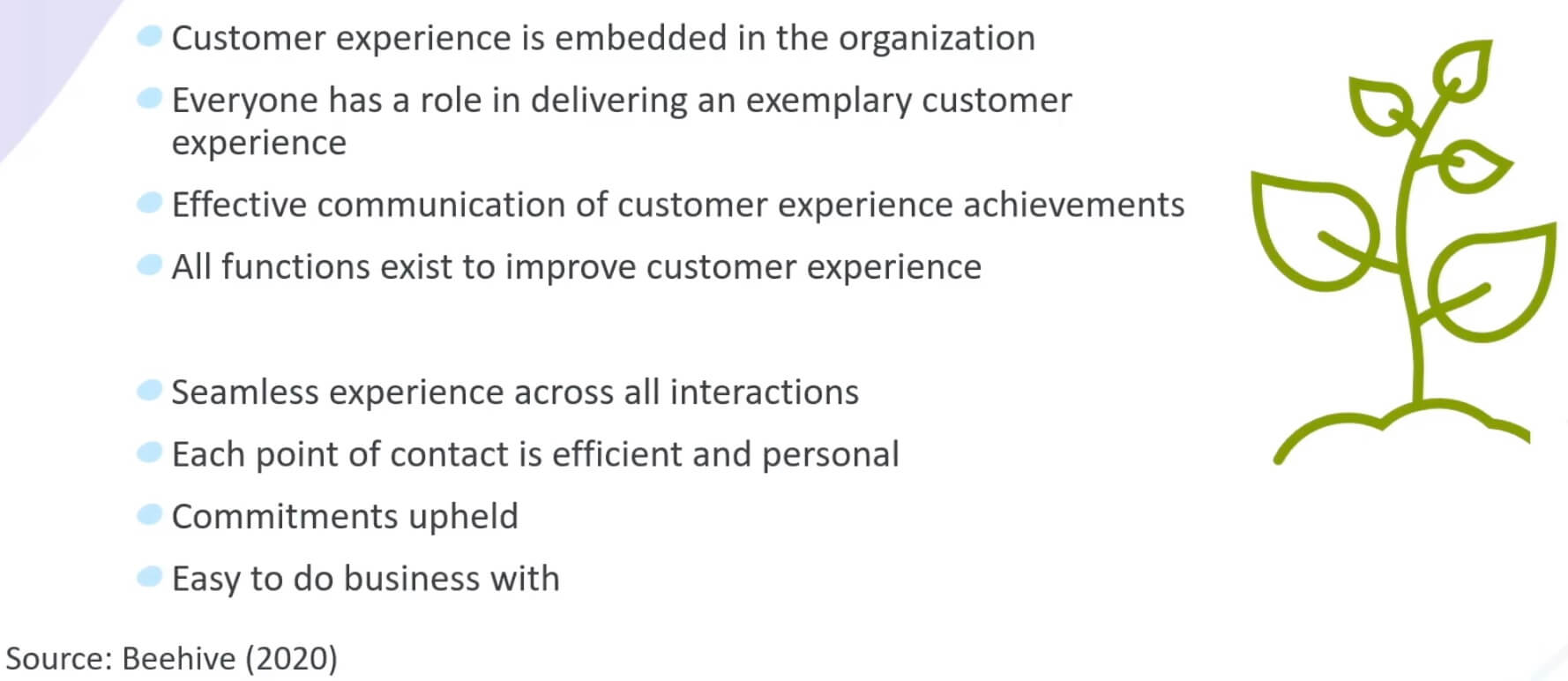
What have I talked about?
What I've tried to get across is that customer success may be a function but ultimately, it's so much more. Really, it's just the starting point for any organization transitioning to a customer-centric approach.
Achieving this is not only going to drive to the ultimate success of the organization but it's going to turn CS from a relatively new function, a new team, into the must-have for every SaaS company.
Obviously, this has been super high level. I want to direct you to some of the resources I mentioned.
- The CS book is called Customer Success: How Innovative Companies are Reducing Churn and Growing Recurring Revenue.
- The New Breed report is called Insights into the State of Customer Success.
- The barriers list I shared came from Super Office's How to Create a Customer-Centric Strategy for your Business article.
- The academic approach to customer-centricity came from an article called The Path to Customer Centricity, which is available in the Journal of Service.
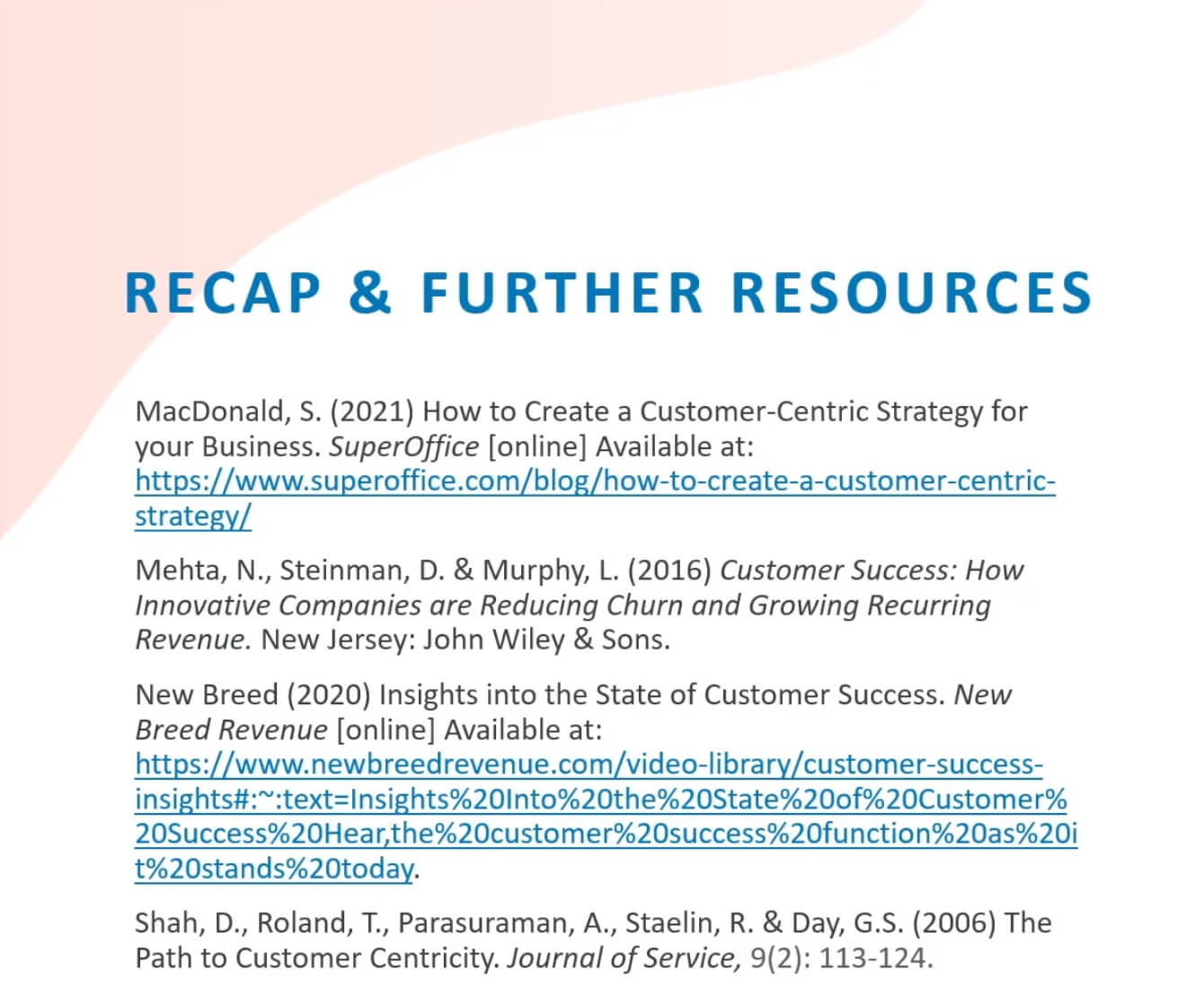
Thank you.



